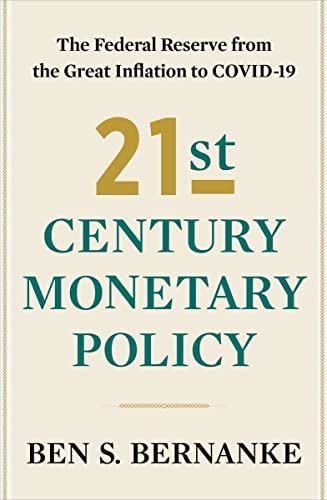- Published on
21st Century Monetary Policy by Ben Bernanke (Summary)
- Author
- Name
- Alex Naydenov
- Title
- Head of Sales at Hygraph
Former Fed Chair Ben Bernanke won the Nobel Prize for Economics in 2022 for his contributions to understanding how failing banks caused the Great Depression of the 1930s. Together with Douglas Diamond and Philip Dybvig, he laid the foundations of modern banking research and emphasised the importance of strong bank regulation.
Ben Bernanke presided over the Federal Reserve System, FRS, the central bank of the Unites States, between 2006 and 2014 under Presidents Bush and Obama.
In 2021, Ben Bernanke published his book "21st Century Monetary Policy: The Federal Reserve from the Great Inflation to COVID-19". He focuses on the history of central banking in the US between the 1950s and 2021, its transformation to a more active institutions and the ongoing struggle to keep Fed independant.
Key takeaways:
The job of monetary policy-makers has traditionally been “to take away the punch bowl just as the party gets going”. Interest rates have to be raized when the economy is booming, so that it does not overheat (rising inflation). The term was coined by Fed Chair William McChesney Martin Jr. (1951 until 1970).
Recently, the Federal Reserve started taking a much more proactive role in dealing with economic downturns and recessions and in minimizing the risks of jobless recoveries with low growth.
While traditionally central bank tools only included changing the interest rate at which banks borrow from the central bank, after the 2008-2009 Great Recession new more aggressive methods were employed incl. central bank purchases of longer-term financial assets, popularly known as quantitative easing, QE; foreward guidance (committing to specific polocy actions in the future or sharing analysis and forecasts about the the development of the economy with the public); increased transperancy about the central bank's research and decision making process; proactive communication and public relations;cross-country cooperation and coordination with other central banks.
The Fed and most other central banks have a dual mandate of keeping both inflation stable, and employment at its natural level. During Bernanke's term as Chair an official inflation target of 2% per year has been introduced.
Bernanke offers a Central Bank history overview with a focus on US Fed chairs incl. Paul Volcker who famously helped bring down inflation and inflation expectations; Alan Greenspan whose easy-money policies in the 90s might have contributed to the dotcom bubble and the subprime mortgage crisis; Jenett Yelen, the first female Fed Chair and a strong defender of Fed's anti-unemployment mandatel; and, Jerome Powellwho presided the Fed during the Coronavirus Pandemic.
Bernanke looks into the future of Fed and central banking policies and believes that more responsibilities could be added incl. monitoring non-banking financial entities, controlling climate change factors, unequality issues, regulating cryptocurrencies.
Criticism vocally shared in the Washington Post includes points like:
- Bernanke's role in banking deregulation before the Global Recession (despite his later support for the Dodd-Frank act against exorbitant risk-taking of private financial actors)
- the new Fed measures are still favourable to Wall Street high-risk takers and leading to high inequality
- QE and low interst rates bear partial responsibility for the high inflation of 2021
- tech and crypto bubbles are starting to burst.
